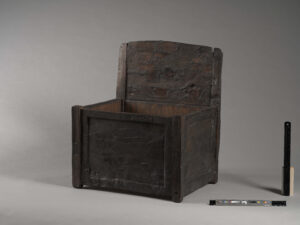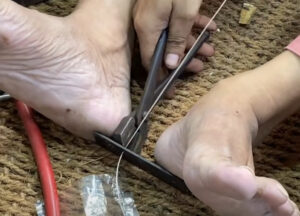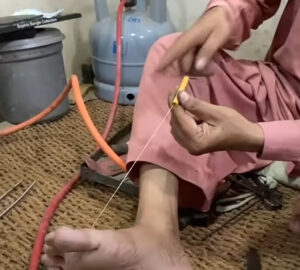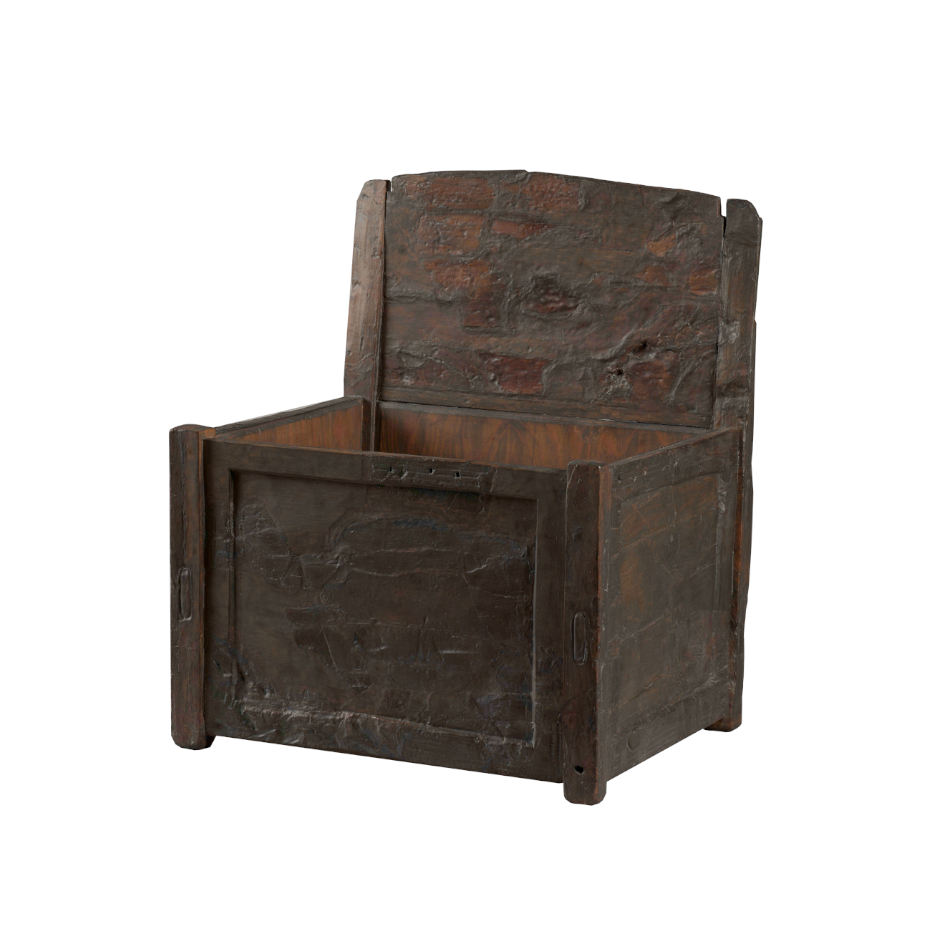The seating arrangements during the period of 750-1150 AD were rudimentary, with individuals either seated on mats and blankets directly on the ground or on low benches. Notably, available seating primarily pertained to work-related activities necessitating a slightly elevated position. These included milking stools, pig slaughtering benches, and loom benches.
Remarkably, leisure chairs were conspicuously absent, even among the upper echelons of society. For instance, the Oseberg throne, closely resembling continental counterparts, exemplifies this trend with a seating height of a mere 37 cm off the ground. This suggests that subjects of the rulers in Oseberg likely sat directly on the ground or on benches with the throne possibly atop a raised platform, reflecting an elevated distance to the subjects.

The prevalent practice of individuals sitting directly on the ground, often on mats and blankets, offers valuable insights into the working conditions of goldsmiths during the period. It is conceivable that goldsmiths worked in a cross-legged position. This posture, well-documented in period depictions, facilitated the execution of various goldsmithing techniques. Of particular interest is the itinerant goldsmith, a focal point of this discussion, who greatly benefited from this mode of seating. This way of working is also widely attested in goldsmith practices today in the near and far east.
The advantages of ground-level seating were multifaceted. Firstly, it engendered heightened bodily engagement, leveraging torso and hip musculature, thereby augmenting the proficiency in executing specialized tasks like wire pulling. Secondly, this configuration afforded increased mobility, resulting in an ergonomically favorable workday, thus ameliorating the physical strains typically associated with extended periods of chair-bound work. This approach found particular relevance in wirework, a pivotal facet of goldsmithing.
In order to draw wire the goldsmith could have positioning the draw plate between his or hers feet, applying force through legs and upper body, wire could this way be efficiently drawn. This practice, corroborated by some archaeological evidence of drawplates with central holes, suggests this very technique was in use.

A comparable technique may be applied in the fabrication of extended lengths of twisted wire for granulation work. By threading two strands of wire through a hollow wooden tube and securing their ends with a rod of wood, the goldsmith could secure one end between their toes while utilizing the opposite end as a twisting handle. Tension was maintained by drawing the hollow wooden tube towards the wooden piece employed for twisting. This method facilitated the production of lengthy and uniform strands of twisted wire.

A distinct class of itinerant goldsmiths traversed the lands, lending their expertise to chieftains in major cities. This is evident in the widespread dissemination of cast-identical works and the uniformity of jewelry motifs across Scandinavia.
Crucially, it was the chieftain who provided both workspace and potentially lodging during the commission. This arrangement alluded to a level of trust in the goldsmith as he would travel between many different areas and could there potentially be used as a spy. Though questions linger regarding potential suspicions or even competition among chieftains to retain a skilled goldsmith within their jurisdiction.
In the broader context of early medieval jewelry-making practices worldwide, plate-work emerged as the favored method for transforming precious metals into wearable adornments. The technique of plate-work focused on constructing volume from minimal weight, achieved by converting small amounts of gold into thin sheets and wires. This enabled the creation of hollow jewelry pieces that conveyed an illusion of greater opulence. The price for the creation of such pieces was not determined by labor hours but rather by the perceived value attributed by the patron. This approach mitigated the risk of inadvertently diminishing the patron’s wealth through material costs. If you had to exchange 10 gr. of gold for working 20 gr. of gold the patrons wealth would have been cut in half. Consequently, goldsmiths received compensation in forms of barter with lower monetary value but elevated social and personal worth. This could encompass quality fabrics, bespoke clothing, or land rights, items of relatively lower value for affluent patrons. This practical valuation approach is reflected in the goldsmith’s technique, characterized by efficiency and speed, employing techniques such as stamping, beaded wire production, and spheres for granulation work made in large batches. While casting could achieve even greater speed, it was limited by the challenge of achieving thinness comparable to worked sheets, thus the pieces wouldn’t appear as voluminous. The regional preference for casting, particularly in Scandinavia and northern Europe during the early medieval period, may be attributed to a higher availability of silver and more abundant yet less valuable copper and tin for bronze production. This contrasted with the relatively scarcer use of gold, underscored by the limited quantity of cast gold pieces compared to the prevalent use of worked sheets in the making of gold jewellery.
The itinerant goldsmiths of early medieval Scandinavia exemplified a resourceful and adaptable approach to their craft. Seated directly on the ground, they employed techniques that maximized both efficiency and artistic expression. Their mobility and adaptability were crucial in disseminating artistic motifs and methods across regions. Additionally, the collaborative nature of their work with chieftains provides an intriguing glimpse into the socio-cultural dynamics of the time. Understanding the methodologies and working conditions of these goldsmiths enriches our appreciation for the craftsmanship of early medieval Scandinavia.

